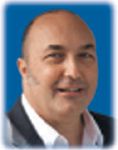Article
How to turn your urology practice into a well-oiled machine
Author(s):
Using manufacturing principles might seem like an odd fit for your practice, but they can help your practice move more efficiently.

It may be tempting to reject altogether the notion that process optimization is relevant to your urology practice. After all, urologists help human patients with highly personal health concerns, not mechanical "inputs." The irony of bringing manufacturing thinking to practice processes is that by improving them, you will be able to improve the patient experience-and make it less dehumanizing, not more so.
The essence of manufacturing efficiency is to continually examine processes and incrementally improve them by eliminating wasted efforts and errors. Wasteful, inefficient processes are irritating to patients, and they cost your practice money. Root them out and your practice will be more profitable, and your patients will be happier.
"Lean" thinking. Sometimes confused with expense cutting or maintaining a small staff, the "lean" discipline is really about the identification and elimination of wasted resources and, especially, wasted time. In a medical practice, hidden time wasters affect both the patient experience and the bottom line.

Preventable process problems are another hidden source of waste. Preventing problems usually takes a lot less time than resolving them. For example, failure to alert patients that they'll be expected to pay their portion of their bill at the time of service is a hidden source of waste. Some practices "save" time by not determining patient responsibility payments prior to patient visits or explaining payment expectations to patients. But patients who are unprepared for what they'll owe are more likely to question or object to bills they receive after the fact. This creates more work for the staff to explain the bill and collect it, and more costs when some of the bills go unpaid.
Preventable no-shows are a huge source of waste for practices. Optimizing reminder calls, e-mails, and text messages is an investment in protecting the practice's most precious resource: provider time.
"Just in time" management. Modern manufacturing recognizes that waiting is inherently costly. When inventories sit on the factory floor, they represent money tied up in the materials used to make the products and rental costs for the space they occupy.
In a medical practice, excessive patient wait time is a sign of inefficiency. It's costly because waiting patients need a place to wait, because waiting patients need staff attention, because some will need to reschedule if the wait is very lengthy, and because some patients will simply find another urologist if they're repeatedly annoyed by waiting.
Other types of waiting create inefficiencies in a practice but are easy to address. Answering phone calls as they come in, rather than letting messages pile up during lunchtime, requires much less staff time, because returning a patient's call may take several attempts. Billing daily, rather than accumulating large batches of waiting bills, also saves money by bringing revenue into the practice more promptly and enabling any coding or documentation problems to be solved more easily, when they're still fresh in providers' minds.
Continuous improvement. The Japanese philosophy of continuous improvement, or "kaizen," was pioneered by Toyota after World War II. The idea is that constant incremental attention by everyone in the organization can help find and resolve problems and waste, and eliminate errors over time.
Empowering staff is central to the concept of continuous improvement. Toyota was the first to recognize that management's view of work processes could be a lot less clear than the line employees' perspective. This is a powerful concept for medical practices, since practice operations are often invisible to physician managers. Allowing (and encouraging!) employees to identify problems and suggest solutions not only provides physicians and practice managers with more accurate information about workflow problems, but it also motivates staff members by recognizing the importance of their contributions. Many aspects of a urology practice's workflow will change over time, with the introduction of new treatment options, tests, and billing rules. Your team is the best resource you have to ensure your processes remain efficient as needs change.
Joe Capko is a senior health care consultant with Capko & Co. who specializes in research, marketing, social media, business development, and strategic planning. Judy Capko is a health care consultant and the author of Take Back Time-Bringing Time Management to Medicine. They can be reached at joe@capko.com
or judy@capko.com
.

More on improving your practice's processes
With all of the complexity involved in the nonclinical side of practicing medicine, hope exists. And the word of the day is efficiency, says Frank Cohen, MPA, in an article in UT sister publication Medical Economics.
Cohen explains the tenets of process improvement, including two major process improvement models: Six Sigma and "lean."
Six Sigma, as the name implies, was founded on the idea that, in any process, one can experience a variation of six standard deviations from the mean (hence the term sigma) and still be in control or still meet specifications.
The second model, referred to as lean, focuses on reduction of waste-wasted movement, wasted resources, wasted energy, wasted space, etc. As a pure model, it not only is more applicable to health care but now is becoming widely accepted as a business management model.
For the full article, see http://www.urologytimes.com/processimprovement/.

















